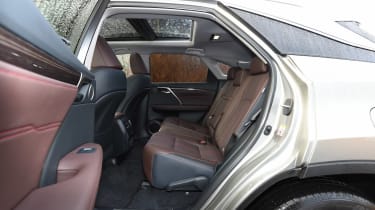Hyundai ix35 Fuel Cell: new hydrogen car driven in the UK
If you can find somewhere to fill it up, the Hyundai ix35 Fuel Cell hydrogen car is a solid alternative choice

There’s no denying Hyundai’s enthusiasm for and commitment to hydrogen has created a truly feasible final product. With zero tailpipe emissions and a refill time of just three minutes, hydrogen could become a genuine alternative to dirty, thirsty internal combustion engines. However, the infrastructure isn’t quite ready, and the high list price will be enough to put most buyers off. But if this is a glimpse of the future, we’re all for it.
While pure electric and hybrid cars continue their upwards curve in the UK, hydrogen-powered vehicles are still something for the future . And with fewer than 15 functioning filling stations in the UK, it’s no real surprise.
However, if you fancy being an early adopter you can actually buy an fuel cell powered Hyundai ix35 FCEV outright for £53,015. It’s not cheap, but it does offer zero tailpipe emissions and a feasible real world range of more than 300 miles. Could this be the car to wean us away from the conventional combustion engine?
While it’s hard to compare the cost of hydrogen against diesel, current estimates suggest running an ix35 FCEV costs around half the amount of an equivalent diesel model per mile. Hyundai says the ix35 FCEV will do 369 miles on a tank, and based on our drive, that doesn’t sound too over-optimistic.
We weren’t particularly gentle during our test either, and the trip readout ticked down fairly consistently. Of course, you’ll have to plan your routes very carefully if you want to use it on longer journeys, but London-based commuters should have no worries about travelling to and from work, with three working stations within the M25.
Used - available now

2024 BMW
M3
29,000 milesAutomaticPetrol3.0L
Cash £49,850
2025 BMW
iX
81,249 milesAutomaticElectric
Cash £26,272
2022 BMW
i3
33,096 milesAutomaticElectric
Cash £14,032
2025 Toyota
Yaris Hybrid
26,859 milesAutomaticPetrol1.5L
Cash £14,935A 0-62mph time of 12.5 seconds and a top speed of just 99mph isn’t going to set any performance records, but the power delivery is instant and remarkably linear, meaning the ix35 feels faster than the figures suggest. It’s not as urgent as a pure electric car and is around 400kg heavier than the standard ix35 SUV – which shows in the bends where it rolls from side to side. A diesel ix35 feels better sorted, but that’s unlikely to matter to eco-concious FCEV buyers – especially when you consider how eerily quiet it is at motorway speeds.
Practicality takes a hit, with the huge hydrogen tank eating into bootspace. Total usable room is down from 591 litres to around 436 litres, which although compromised, is still bigger than a Volkswagen Golf or Ford Focus. Inside the cabin, if you’re familiar with the current ix35, you won’t be able to tell the difference, with the same five-seat setup and decent legroom. The dashboard is lifted from the standard car, too, with an identical infotainment system and well built dashboard.
However, the biggest sticking point for Hyundai’s innovative ix35 is its price. Yes, you get heated seats, touchscreen nav and a reversing camera, but at £53,015 it’s more than £20,000 costlier than its closest rival – the Mitsubishi Outlander PHEV. What’s more, if your driving habits suit, that car will also emit zero tailpipe emissions thanks to an all-electric range of around 30 miles.
Robin Hayles, Hyundai’s sustainable fuel development manager, thinks fuel cells are the “long-term solution” - claiming they will “outbid others as the technology of choice” in the coming years.
Hyundai says it’s the cost of the hydrogen tanks that is currently dictating the sky-high list price, but argues within three to four years the costs will be far better aligned to conventionally powered petrol and diesel cars. So for any interested parties, patience is key.










